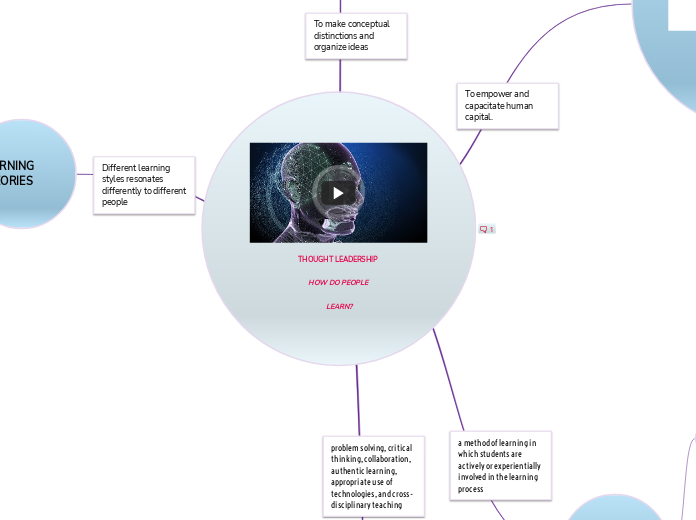THOUGHT LEADERSHIP HOW DO PEOPLE LEARN?
CONTINUOUS PROFESSIONAL DEVELOPMENT
ACTIVE LEARNING
VISUAL LEARNING
Increases retention
Better Understanding
Better subject overview
Develops high-order Thinking skills
Inspires and boosts creativity
Improves memory
Engaging and Fun
EXPERIENTIAL LEARNING
Concrete Experience
Engaging directly in authentic situation.
Active Experimentation
Testing new ideas; honing new skills in a new experience.
Abstract Conceptualisation
Distilling perceptions into abstract concepts.
Reflective Observation
Noticing what happened and relating to past experience and conceptual understanding.
CONCEPTUAL FRAMEWORKS
TPACK MODEL
SAMR MODEL
LEARNING THEORIES
Constructivism
Constructivism as a paradigm or worldview posits that learning is an active, constructive process. The learner is an information constructor. People actively construct or create their own subjective representations of objective reality. New information is linked to to prior knowledge, thus mental representations are subjective
Cognitivism
Humanism
Humanism is a paradigm / philosophy / pedagogical approach that believes learning is viewed as a personal act to fulfill one’s potential.
Behaviourism
Behaviorism is primarily concerned with observable and measurable aspects of human behavior.
Connectivism
a theoretical framework for understanding learning in a digital age
21st CENTURY LEARNING
4IR tools and Emerging Technologies
Artificial Intelligence
AI which stands for artificial intelligence refers to systems or machines that mimic human intelligence to perform tasks and can iteratively improve themselves based on the information they collect.
Augmented Reality
a technology that superimposes a computer-generated image on a user's view of the real world, thus providing a composite view.
Virtual Reality
the computer-generated simulation of a three-dimensional image or environment that can be interacted with in a seemingly real or physical way by a person using special electronic equipment, such as a helmet with a screen inside or gloves fitted with sensors.
